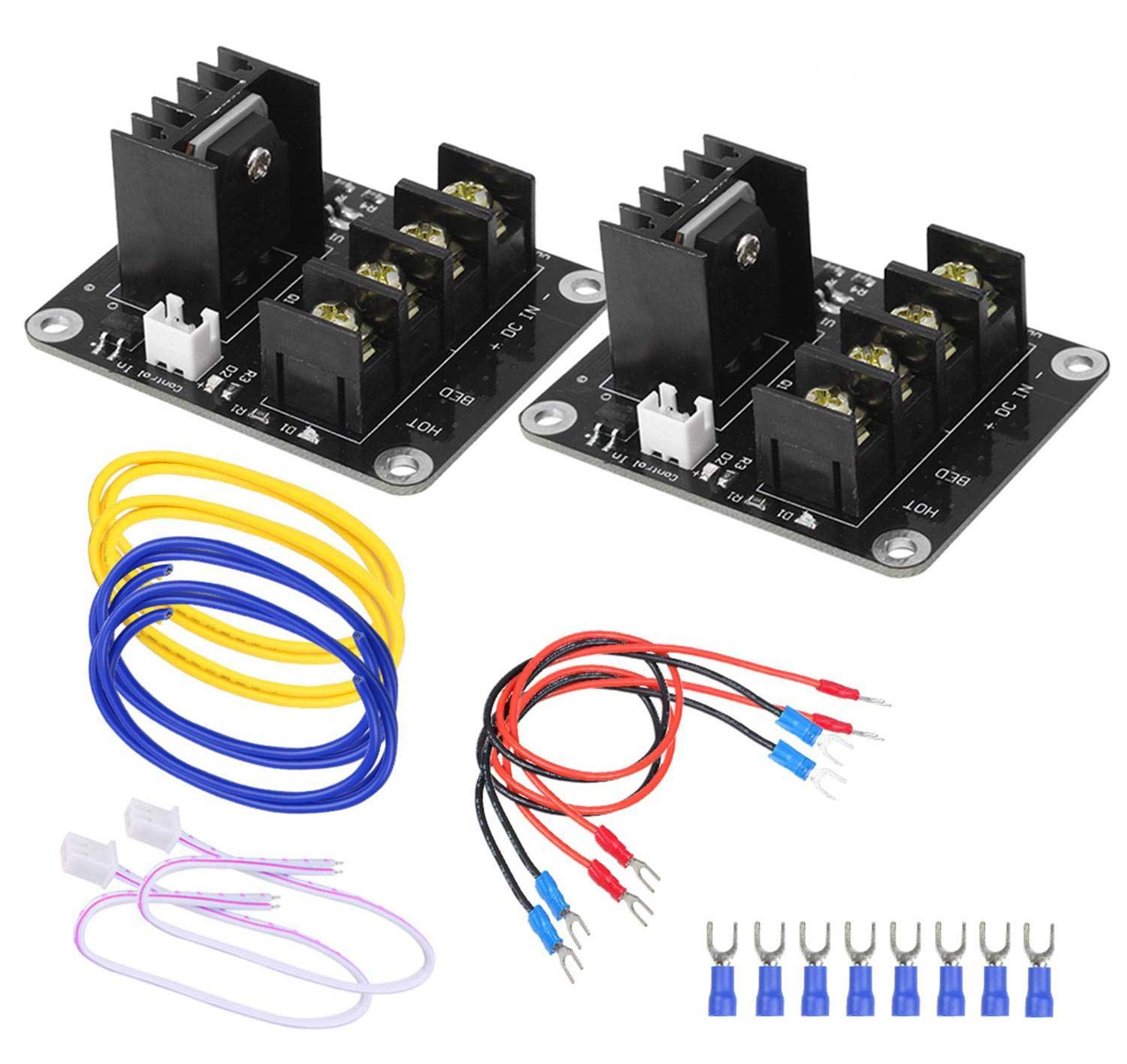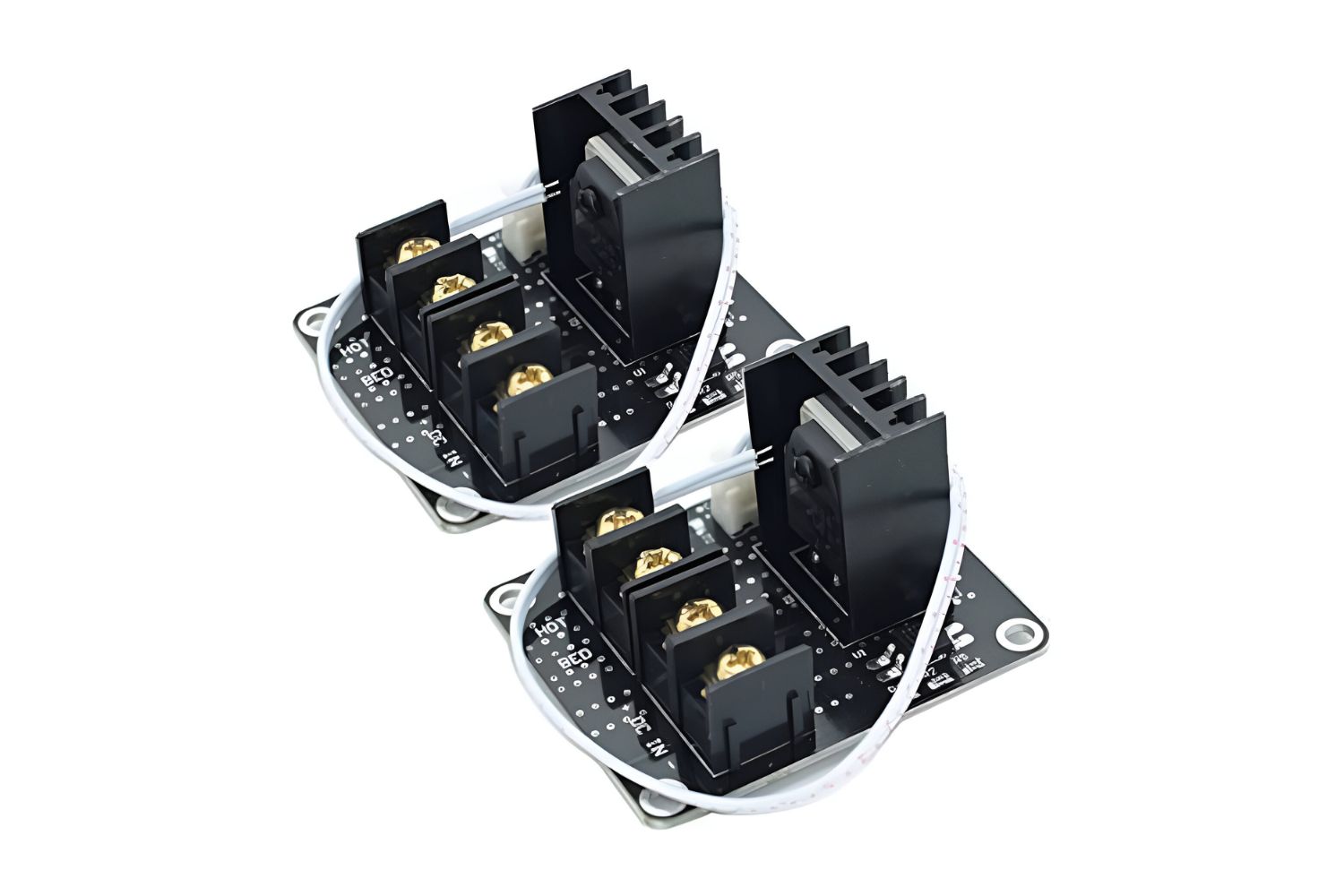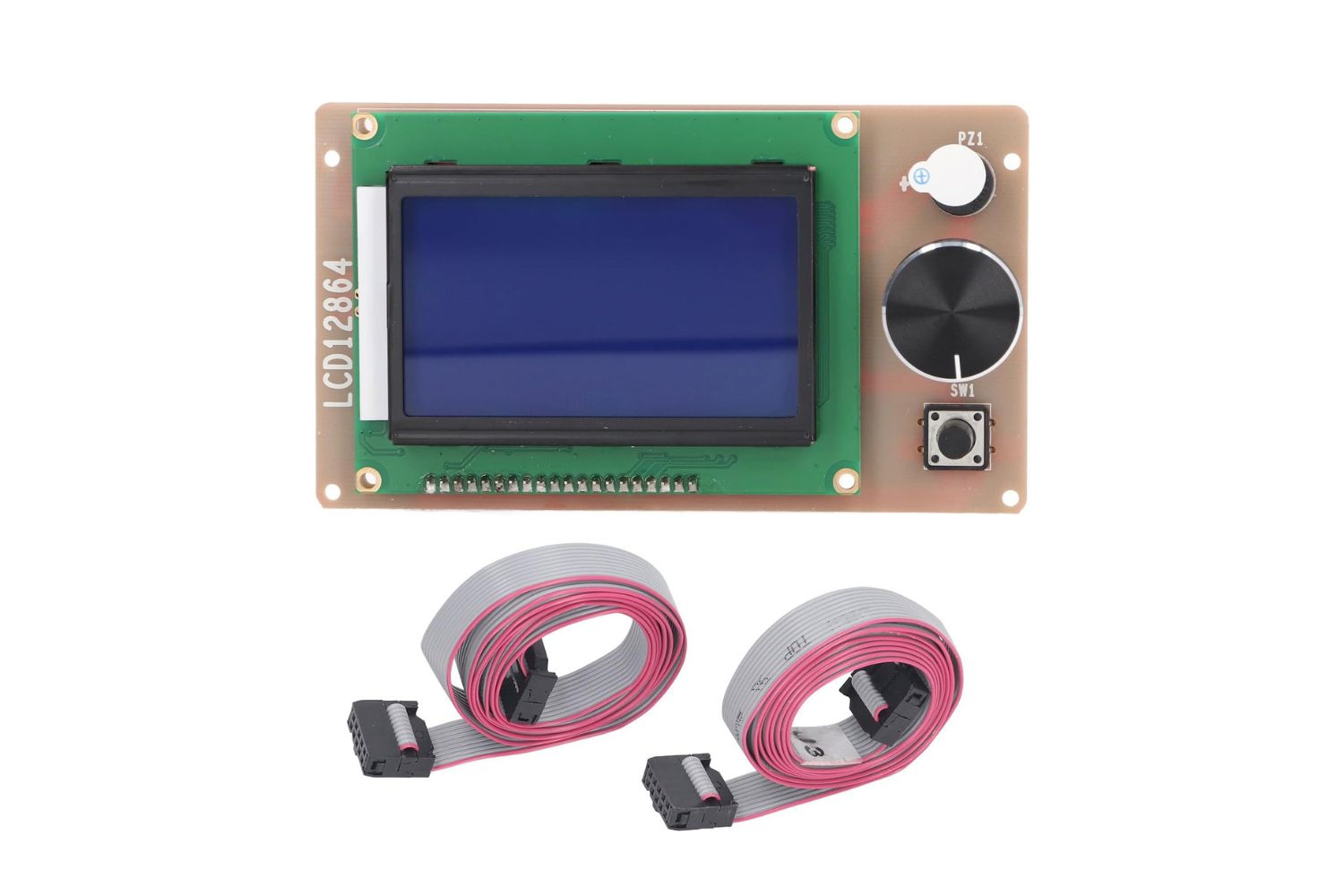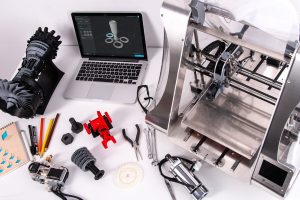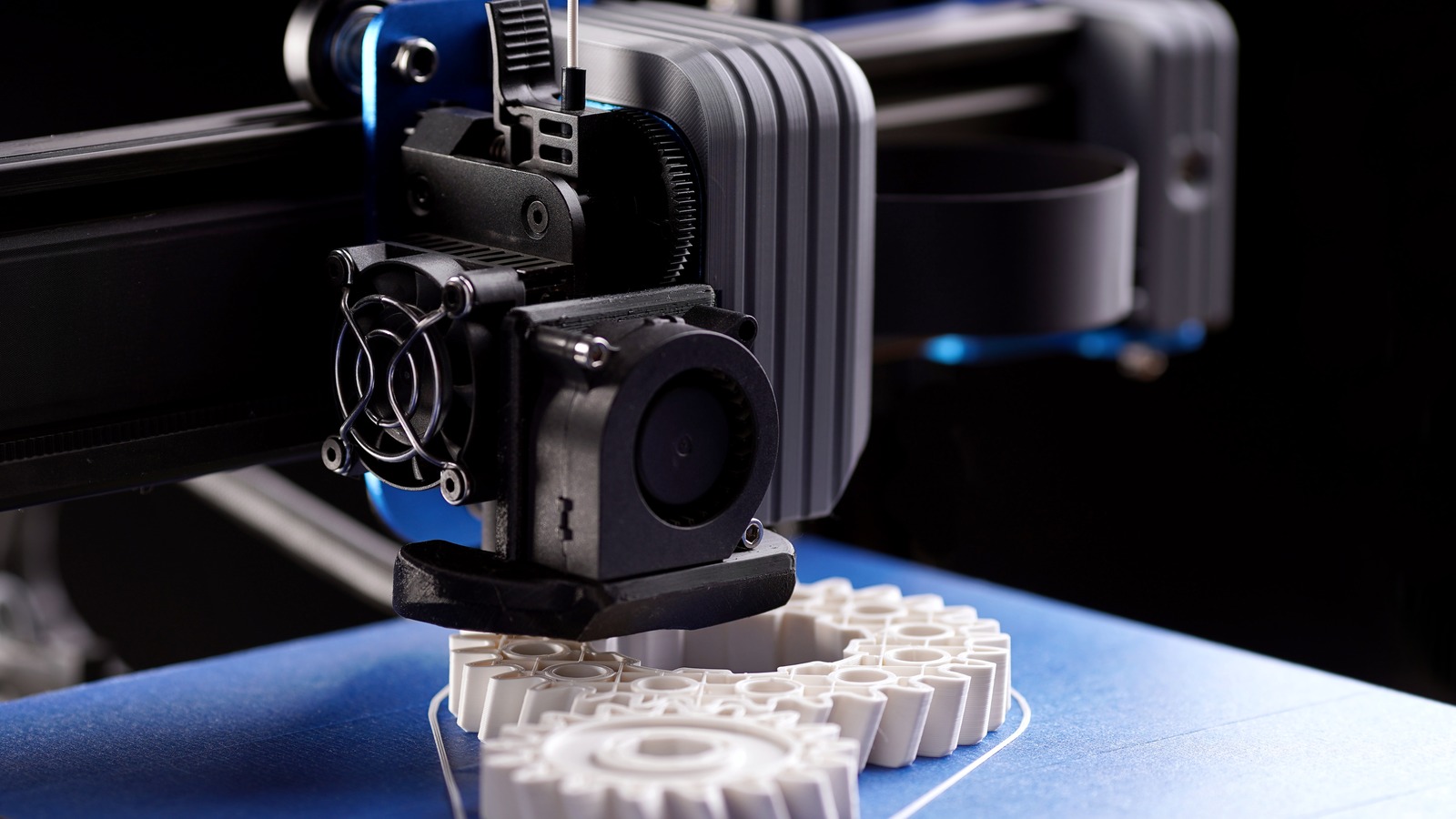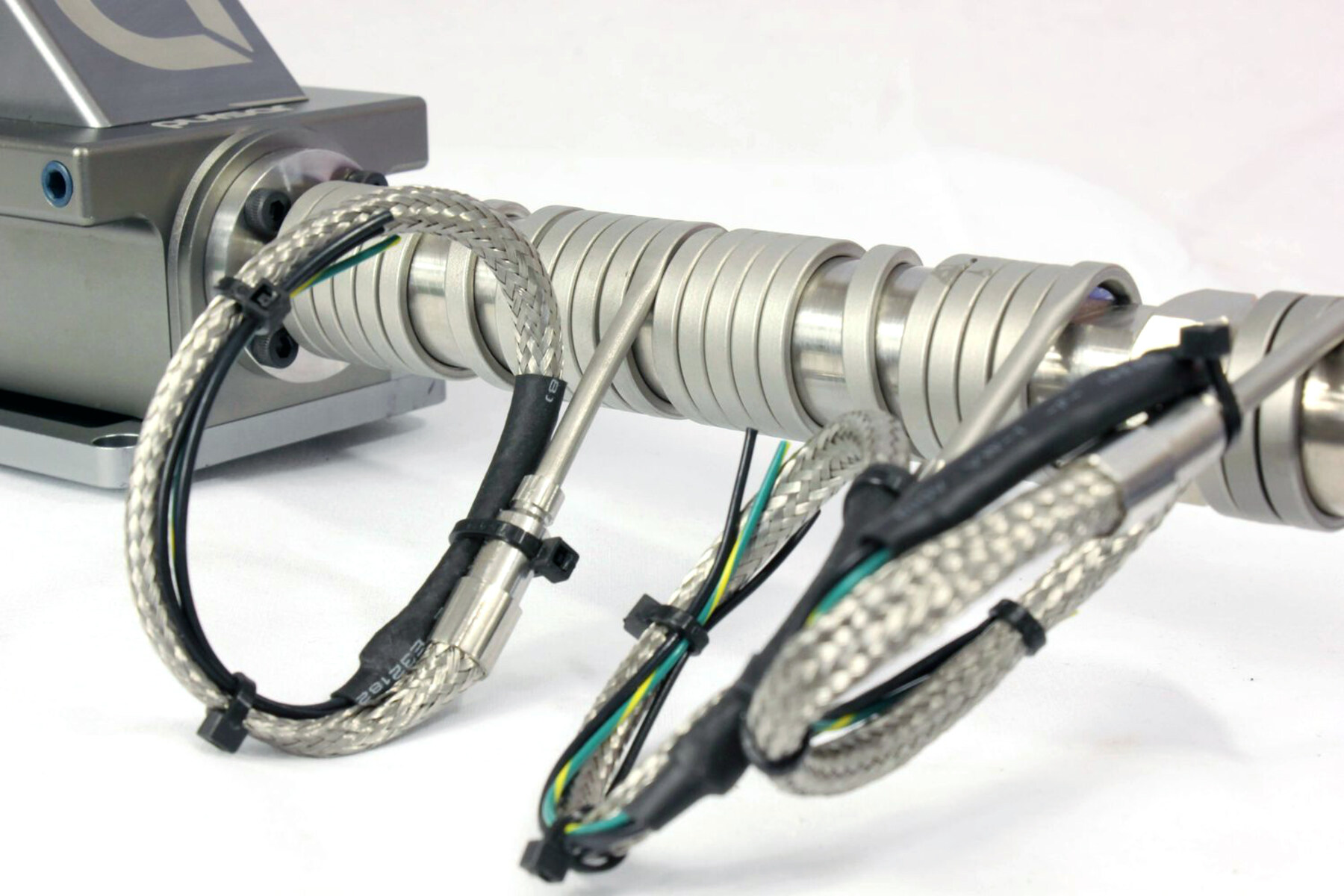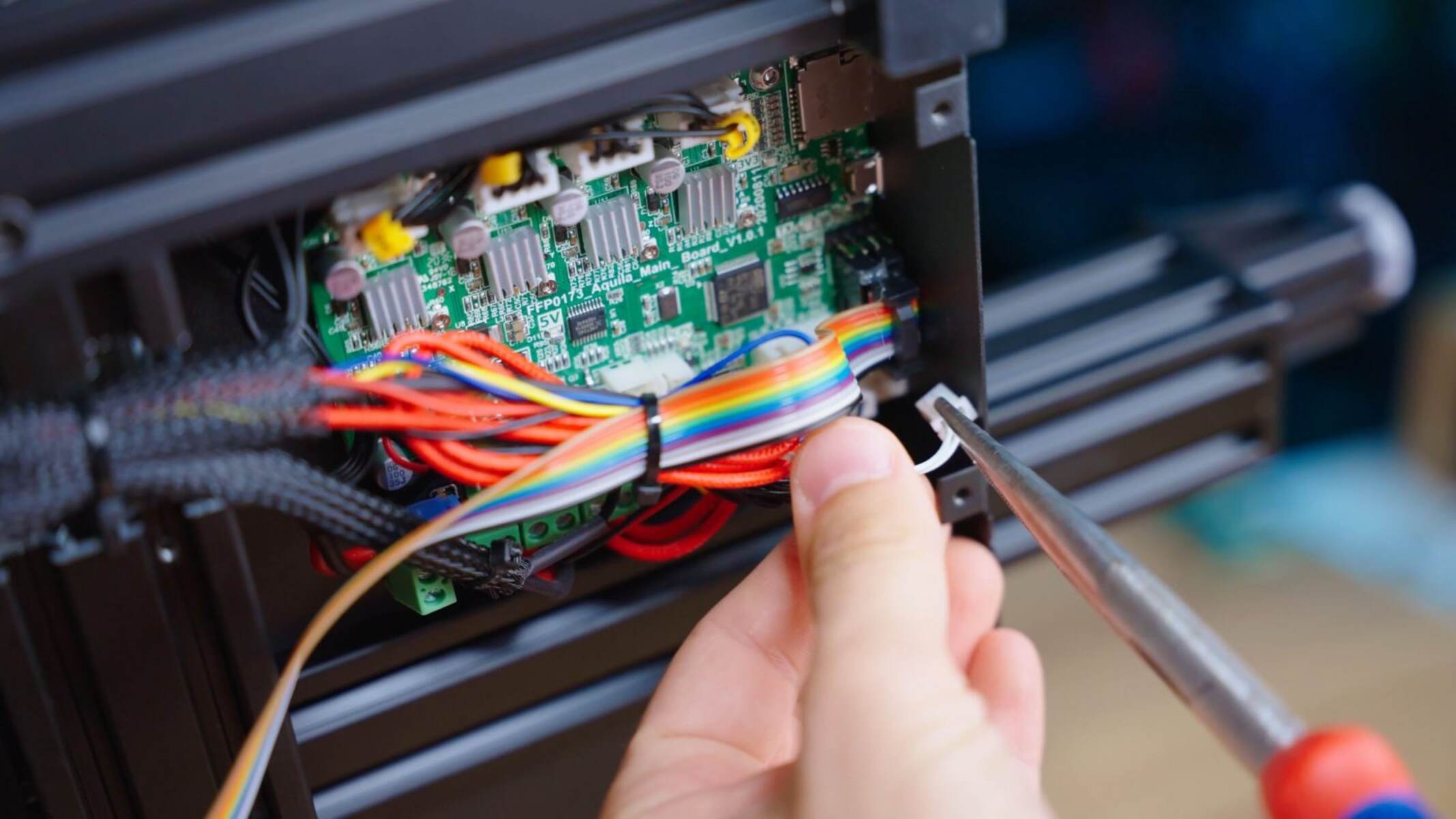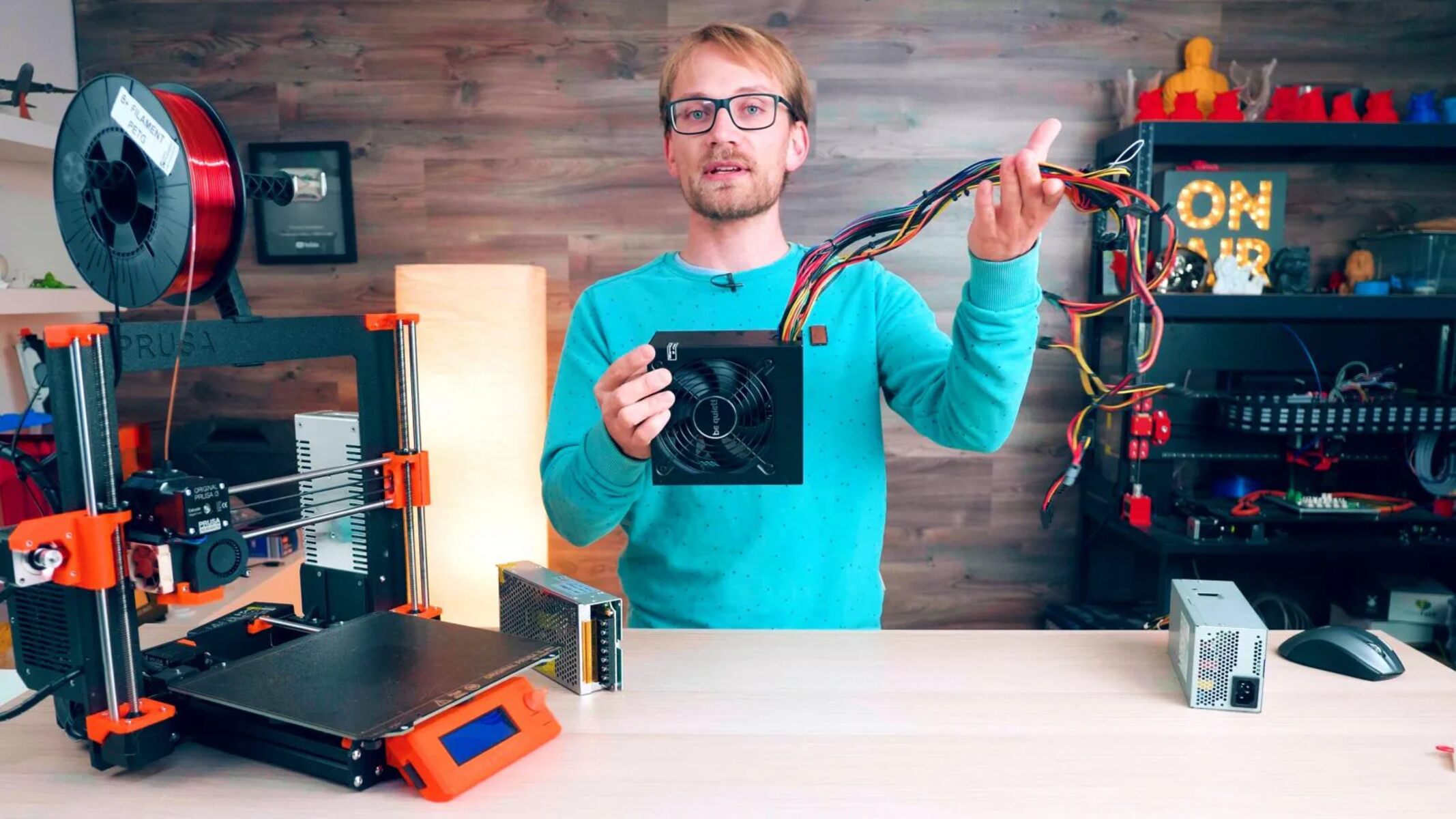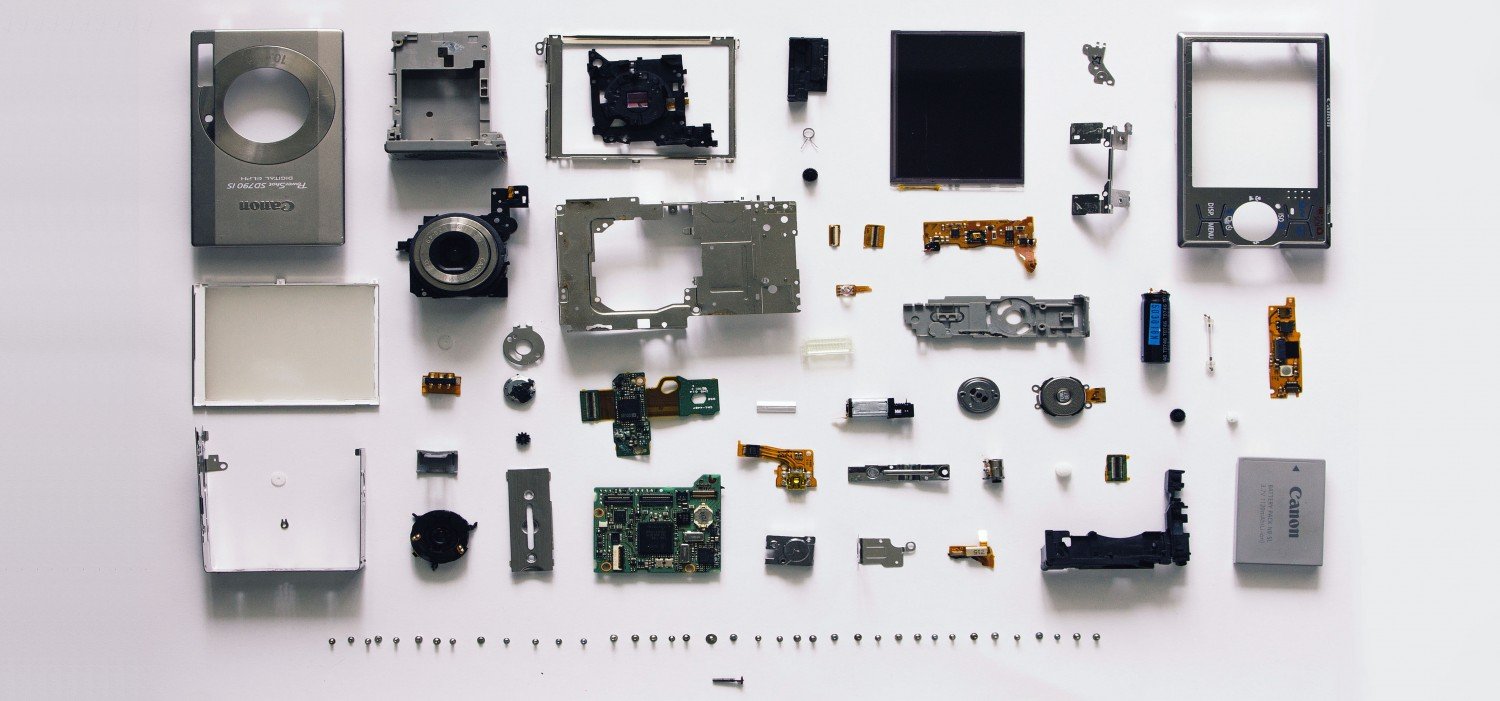Introduction
A 3D printer is a revolutionary device that has opened up endless possibilities in various industries, from prototyping to manufacturing. It utilizes advanced technology to turn digital designs into physical objects. One crucial component of a 3D printer is the heating board, which ensures that the printing material is heated to the correct temperature for optimal printing results.
However, an issue that can arise with the heating board is the overheating of the MOSFET (Metal-Oxide-Semiconductor Field-Effect Transistor), a key component in regulating the power supply to the heating element. MOSFET overheating can lead to various problems, including poor print quality, damaged components, and even safety hazards. Once the MOSFET reaches its temperature limits, it can no longer effectively regulate the power flow, resulting in irregular heating and potential damage to the printer.
This article aims to provide a comprehensive understanding of the causes of MOSFET overheating on a 3D printer’s heating board and how to prevent it. By identifying the common causes and implementing preventive measures, you can ensure the smooth and efficient operation of your 3D printer, prolong its lifespan, and enhance your printing experience.
What is a MOSFET?
A MOSFET (Metal-Oxide-Semiconductor Field-Effect Transistor) is a type of transistor that is widely used in electronic devices, including 3D printers. It is a fundamental component in regulating the electrical current flowing through the printer’s heating board. MOSFETs operate by controlling the voltage and current between the source and drain terminals through the manipulation of an electric field.
The primary function of a MOSFET in a 3D printer is to act as a switch, allowing the printer’s control board to regulate the power supply to the heating element. By controlling the amount of current flowing through the heating board, the MOSFET ensures that the heating element reaches and maintains the desired temperature for successful 3D printing.
MOSFETs are particularly beneficial in 3D printing because they can handle high power loads efficiently, making them suitable for applications that require precise temperature control. They are integral to the stability and reliability of the 3D printing process.
There are different types of MOSFETs available, including N-channel and P-channel MOSFETs. N-channel MOSFETs are commonly used in 3D printers due to their superior performance and efficiency. These MOSFETs have a low ON resistance, which minimizes power loss and heat generation during operation. In contrast, P-channel MOSFETs have a higher ON resistance and are typically used in different applications.
It is important to note that MOSFETs have their limitations in terms of the maximum current load they can handle and the temperature range they are designed to withstand. Exceeding these specifications can lead to MOSFET overheating and potential failure, which can have detrimental effects on the operation and safety of a 3D printer.
The role of a MOSFET in a 3D printer
A MOSFET (Metal-Oxide-Semiconductor Field-Effect Transistor) plays a crucial role in the operation of a 3D printer by regulating the power supply to the heating element, usually on the printer’s heating board. It acts as a switch that controls the flow of electrical current through the heating element, ensuring optimal temperature control during the 3D printing process.
When a 3D printer is in operation, the MOSFET receives signals from the printer’s control board to adjust the flow of electricity. This control allows the heating element on the printer’s heating board to reach and maintain the desired temperature for melting and shaping the printing material, such as plastic filament or resin.
The MOSFET acts as an intermediary between the control board and the heating element. It amplifies the control signals from the control board and connects the power supply to the heating element accordingly. By precisely regulating the power flow, the MOSFET ensures that the heating element receives the correct amount of electrical current, resulting in consistent and accurate temperature control.
Without a MOSFET, the control board would have to directly handle the high power loads required by the heating element, which could potentially overload and damage the control board. By utilizing a MOSFET, the control board remains protected and capable of operating within its power limitations.
In addition to protecting the control board, the MOSFET also helps prevent power surges, voltage spikes, and other electrical irregularities from reaching the heating element. It acts as a buffer, maintaining a stable and controlled power supply to the heating element, thereby improving the overall efficiency and reliability of the 3D printing process.
Overall, a MOSFET is a critical component in a 3D printer, responsible for regulating the power supply to the heating element and ensuring precise temperature control. By effectively managing the flow of electricity, the MOSFET contributes to the successful and consistent production of high-quality 3D prints.
Understanding overheating in a MOSFET
Overheating is a common issue that can occur in a MOSFET (Metal-Oxide-Semiconductor Field-Effect Transistor) within a 3D printer. When a MOSFET operates beyond its temperature limits, it can result in various problems, including performance degradation, decreased lifespan, and potential failure. Understanding the causes of MOSFET overheating is essential for effectively preventing and addressing this issue.
One of the primary factors that contribute to MOSFET overheating is excessive power dissipation. MOSFETs have a certain power dissipation capacity, which represents the maximum amount of power they can handle without overheating. If the power dissipation exceeds this limit, it can lead to excessive heat generation in the MOSFET.
Another factor that can contribute to MOSFET overheating is inadequate heat sinking. Heat sinking is the process of transferring and dissipating heat away from the MOSFET. Without a properly designed heat sink or cooling system, the MOSFET may not be able to effectively dissipate the heat it generates during operation, resulting in overheating.
In addition to power dissipation and heat sinking, factors such as high ambient temperature and insufficient airflow can also contribute to MOSFET overheating. When the surrounding environment is already hot, the MOSFET has to work harder to dissipate heat. Similarly, if the printer’s ventilation or airflow is limited, it can impede the cooling process and lead to overheating of the MOSFET.
Furthermore, poor electrical connections or faulty wiring can cause an increase in resistance, which leads to higher power dissipation and potential overheating of the MOSFET. It is important to ensure that all electrical connections are secure and that the wiring has been correctly installed to minimize resistance and prevent overheating.
It is worth noting that MOSFETs also have temperature limits specified by the manufacturer. These limits represent the maximum temperature at which a MOSFET can safely operate without compromising its performance and longevity. Exceeding these temperature limits can result in permanent damage to the MOSFET and other components within the 3D printer.
By understanding the causes of MOSFET overheating, 3D printer enthusiasts and professionals can take proactive measures to prevent this issue. Implementing appropriate cooling mechanisms, ensuring proper ventilation, reinforcing electrical connections, and staying within the recommended power limits are key steps to safeguarding the MOSFET and maintaining optimal performance in a 3D printer.
Common causes of MOSFET overheating on a 3D printer heating board
MOSFET (Metal-Oxide-Semiconductor Field-Effect Transistor) overheating on a 3D printer heating board can be attributed to various factors. It is crucial to identify these common causes to effectively prevent and address MOSFET overheating issues.
1. Insufficient cooling: Inadequate cooling mechanisms, such as a lack of proper heat sinks or cooling fans, can lead to MOSFET overheating. Without efficient heat dissipation, the heat generated by the MOSFET during operation can accumulate, causing the temperature to rise beyond acceptable limits.
2. Higher current load than the MOSFET can handle: Exceeding the maximum current handling capability of the MOSFET can result in overheating. This can occur if the printer is drawing more power than the MOSFET is designed to handle, either due to a malfunctioning component or improper configuration.
3. Poor quality MOSFET or incorrect installation: Low-quality MOSFETs or incorrect installation can contribute to overheating. Inferior MOSFETs may have higher internal resistance, leading to greater power dissipation and subsequent overheating. Incorrect connections or faulty wiring can also cause increased resistance, impairing the MOSFET’s ability to handle current flow effectively.
4. Inadequate ventilation: Insufficient airflow or limited ventilation around the heating board can hinder heat dissipation, resulting in MOSFET overheating. The trapped heat can accumulate, raising the temperature of the MOSFET and potentially causing damage.
5. Excessive ambient temperature: High ambient temperatures can exacerbate MOSFET overheating. If the 3D printer is operating in a hot environment, the MOSFET may struggle to dissipate heat effectively, leading to an increase in temperature and potential overheating.
6. Incorrect voltage or power supply: Using an incorrect voltage or power supply for the heating board can put excessive strain on the MOSFET, causing it to overheat. It is essential to use the appropriate voltage and ensure that the power supply is compatible with the printer’s specifications.
7. Continuous operation without sufficient cool-down periods: Operating the 3D printer for extended periods without allowing it to cool down can lead to sustained heat generation and subsequent MOSFET overheating. It is advisable to incorporate regular cool-down periods to prevent excessive heat buildup.
By being aware of these common causes, users can adopt preventive measures to avoid MOSFET overheating on a 3D printer heating board. Implementing proper cooling and ventilation, using high-quality MOSFETs, ensuring correct installation, and maintaining appropriate operating conditions are crucial to mitigate the risk of MOSFET overheating and safeguard the printer’s functionality.
Insufficient cooling
Insufficient cooling is a common cause of MOSFET (Metal-Oxide-Semiconductor Field-Effect Transistor) overheating on a 3D printer heating board. MOSFETs generate heat during operation, and without adequate cooling mechanisms, this heat can accumulate, leading to temperature rise and potential overheating.
Proper cooling is essential for dissipating the heat generated by the MOSFET effectively. Insufficient heat dissipation can occur due to several reasons:
1. Lack of heat sinks: Heat sinks are commonly used to absorb and dissipate the heat generated by electronic components. If the MOSFET lacks a proper heat sink or has an insufficiently sized one, it may not be able to transfer heat away efficiently. This can lead to the accumulation of heat and subsequent MOSFET overheating.
2. Inadequate cooling fans: Cooling fans are often used to provide additional airflow and aid in heat dissipation. If the 3D printer’s cooling fans are not powerful enough or are not positioned correctly, they may not circulate sufficient air around the heating board. As a result, the MOSFET’s heat may not be carried away effectively, leading to overheating.
3. Restricted air circulation: The placement and design of the 3D printer’s housing can impact air circulation around the heating board. If the housing is not appropriately designed to allow proper airflow, heat may become trapped, preventing efficient cooling. This restricted air circulation can contribute to MOSFET overheating.
4. Dust and debris buildup: Over time, dust and debris can accumulate on the cooling components, such as heat sinks and fans. This buildup restricts airflow and insulation, impeding the cooling process. Regular maintenance, including cleaning the cooling components, is essential to ensure unrestricted airflow and prevent MOSFET overheating.
5. Excessive heating board temperature: If the heating board, particularly the heat bed, operates at abnormally high temperatures, it can affect the surrounding components, including the MOSFET. The heat radiated from the heating board can increase the ambient temperature and make cooling less effective, ultimately leading to MOSFET overheating.
To address issues related to insufficient cooling, several measures can be taken:
1. Install adequate heat sinks: Ensure that the MOSFET has appropriate heat sinks installed to maximize heat dissipation. The heat sinks should have sufficient surface area and good thermal conductivity to effectively transfer the heat away from the MOSFET.
2. Check and maintain cooling fans: Regularly inspect the cooling fans to ensure they are functioning optimally. Clean any accumulated dust or debris and ensure they are correctly positioned to provide adequate airflow around the heating board and MOSFET.
3. Optimize air circulation: Evaluate the printer’s housing and make modifications if necessary to improve airflow. Ensure that there are no obstructions or restrictions that impede the natural flow of air around the heating board and MOSFET. Consider adding additional vents or openings to enhance air circulation.
4. Keep the printer clean: Regularly clean the printer to remove dust and debris that can hinder cooling. Pay special attention to the cooling components, such as the heat sinks and fans, and ensure they are free from any obstructions that could restrict airflow.
By addressing the issue of insufficient cooling, users can significantly reduce the risk of MOSFET overheating, prolong the lifespan of the printer’s components, and ensure reliable and efficient 3D printing operations.
Higher current load than the MOSFET can handle
One common cause of MOSFET (Metal-Oxide-Semiconductor Field-Effect Transistor) overheating on a 3D printer heating board is when the current load exceeds the MOSFET’s capacity. MOSFETs have specific current handling limits, and exceeding these limits can lead to excessive power dissipation and subsequent overheating.
If the current flowing through the MOSFET surpasses its rated capacity, it can generate more heat than the MOSFET can dissipate efficiently. This can occur due to several factors:
1. Power supply issues: If the power supply connected to the 3D printer’s heating board delivers a higher current than the MOSFET can handle, it can lead to MOSFET overheating. This can happen if the power supply is providing a higher voltage or if there is a malfunction in the power supply itself.
2. Print settings: Incorrectly configured print settings, such as setting the heating bed temperature too high or selecting a filament type that requires more power, can result in a higher current load on the MOSFET. It is essential to use the appropriate settings and ensure they align with the MOSFET’s current handling capabilities.
3. Component malfunctions: If other components connected to the heating board, such as the temperature sensors or thermistors, malfunction, they may cause an imbalance in the current flow. This imbalance can result in higher current loads on the MOSFET, leading to overheating.
4. Wiring issues: Poorly executed or faulty wiring can increase resistance, causing a higher current load on the MOSFET. Loose or damaged wires, incorrect connections, or inadequate wire gauge can all contribute to increased resistance and excess current flow.
To prevent MOSFET overheating due to higher current loads, several steps can be taken:
1. Check and adjust power supply: Ensure that the power supply connected to the heating board is delivering the correct voltage and current. If the power supply exceeds the MOSFET’s current handling capacity, consider using a power supply with a lower output or one specifically designed for the printer’s requirements.
2. Review and optimize print settings: Double-check the print settings, particularly the temperature settings for the heating bed. Use appropriate settings that align with the MOSFET’s current handling capabilities and the recommended temperature range for the materials being printed.
3. Inspect and repair component malfunctions: Regularly inspect all components connected to the heating board, including temperature sensors and thermistors, to ensure their proper functioning. If any malfunctions are detected, either repair or replace the faulty components as necessary.
4. Verify and improve wiring connections: Carefully inspect the wiring connections to ensure they are secure, properly connected, and free from any damage. Use the appropriate wire gauge for the current load and consider reconfiguring the wiring layout if necessary to minimize resistance.
Addressing the issue of higher current loads on the MOSFET is crucial to prevent overheating and preserve the overall functionality and performance of the 3D printer.
Poor quality MOSFET or incorrect installation
Another common cause of MOSFET (Metal-Oxide-Semiconductor Field-Effect Transistor) overheating on a 3D printer heating board is the use of low-quality MOSFETs or incorrect installation. Both factors can contribute to increased resistance, higher power dissipation, and ultimately, MOSFET overheating.
Here are the main aspects to consider:
1. Low-quality MOSFETs: MOSFETs come in various qualities and specifications. Opting for low-quality or substandard MOSFETs can result in increased internal resistance. Higher resistance causes the MOSFET to generate more heat while trying to handle the required current flow, leading to overheating. It is crucial to select MOSFETs from reputable manufacturers that meet the necessary electrical specifications for the printer’s heating board.
2. Incorrect installation: Incorrectly installing the MOSFET can also lead to overheating issues. Poorly executed connections or improper wiring can increase resistance and hinder the MOSFET’s ability to handle current flow efficiently. It is essential to follow manufacturer guidelines and wiring diagrams meticulously during the installation process to ensure proper functioning and prevent overheating.
3. Insufficient heat dissipation: Inadequate heat dissipation can occur if the MOSFET is not mounted onto a suitable heat sink or if the heat sink size is insufficient to effectively transfer heat away from the MOSFET. The heat generated during operation cannot be dissipated efficiently, causing the MOSFET to overheat. Installing an appropriate heat sink and ensuring good thermal contact between the MOSFET and the heat sink is crucial to promote efficient heat dissipation.
4. Inadequate thermal management: In addition to heat sinks, proper thermal management is essential to prevent MOSFET overheating. Using thermal paste or adhesive pads between the MOSFET and the heat sink enhances thermal conductivity and improves heat transfer. This helps dissipate the heat generated by the MOSFET more effectively, reducing the risk of overheating.
To address the issues associated with poor quality MOSFETs and incorrect installation, several steps can be taken:
1. Invest in high-quality MOSFETs: Choose MOSFETs from reputable manufacturers that meet the electrical requirements of the 3D printer’s heating board. High-quality MOSFETs with low internal resistance can handle current flow more efficiently and are less prone to overheating.
2. Follow manufacturer guidelines: Ensure that the MOSFET is installed correctly by carefully following the manufacturer’s instructions and wiring diagrams. Double-check all connections and ensure that the MOSFET is properly mounted onto a suitable heat sink.
3. Improve heat dissipation: If the MOSFET is inadequately dissipating heat, consider upgrading to a larger heat sink with better cooling capabilities. Enhance thermal contact by using thermal paste or adhesive pads between the MOSFET and the heat sink to promote effective heat transfer.
4. Seek professional assistance: If you are unsure about the quality of the MOSFET or how to properly install it, consider seeking assistance from a professional or knowledgeable individual to ensure the correct installation and functionality of the MOSFET.
Addressing poor quality MOSFETs and incorrect installation practices is crucial for preventing overheating and maintaining the proper functioning of the MOSFET within the 3D printer’s heating board.
Signs of MOSFET overheating
Identifying the signs of MOSFET (Metal-Oxide-Semiconductor Field-Effect Transistor) overheating on a 3D printer heating board is vital for taking prompt action to prevent further damage and maintain the printer’s functionality. Here are some common signs that indicate MOSFET overheating:
1. Elevated temperature: The MOSFET itself may feel excessively hot to the touch. You might notice a significant increase in temperature around the heating board area. Be cautious when touching the MOSFET or the surrounding components as they can cause burns if they are overheating.
2. Uneven heating: MOSFET overheating can lead to uneven heating of the printer’s heating bed. You may notice inconsistent heating patterns on the bed surface, resulting in uneven prints or failed prints due to incorrect temperature control.
3. Poor print quality: MOSFET overheating can impact the quality of your prints. The melting and shaping of the printing material may be inconsistent or distorted due to fluctuating temperature control. Prints may contain visible flaws, such as warping, layer separation, or stringing.
4. Intermittent or sudden power interruptions: In some cases, MOSFET overheating can cause power interruptions or sudden shut-offs of the printer. The thermal protection mechanism built into the printer may detect the overheating and trigger a safety mechanism to prevent damage to the components.
5. Strange noises or odors: MOSFET overheating can generate unusual sounds or odors. You may hear clicking noises or notice a burnt smell emanating from the printer’s heating board area. These signs suggest that components are being pushed beyond their operational limits and require immediate attention.
6. Error messages or malfunctions: The printer’s control panel or software may display error messages related to temperature regulation or power management. These error messages indicate that the MOSFET is struggling to maintain proper temperature control and may be overheating.
If you observe any of these signs, it’s crucial to take immediate action to address the issue:
1. Power off the printer: Turn off the printer to prevent further damage. This allows the components, including the MOSFET, to cool down and reduces the risk of overheating-related issues.
2. Check for physical damage: Inspect the MOSFET and the surrounding components for any physical damage, such as burn marks or melted wires. If you notice any damage, consult a professional for assistance or consider replacing the affected components.
3. Improve cooling and ventilation: Evaluate the cooling mechanisms and ventilation around the heating board. Consider adding or upgrading cooling fans, ensuring proper airflow, or installing additional heat sinks to promote effective heat dissipation.
4. Monitor temperature and performance: Keep an eye on the printer’s temperature readings and performance. If the temperature remains consistently high or the printer exhibits irregular behavior, it may indicate ongoing overheating issues. Consider seeking professional assistance or consulting with experienced individuals to diagnose and address the problem.
Being vigilant and proactive in identifying the signs of MOSFET overheating enables timely intervention, reducing the risk of further damage and ensuring the smooth operation of your 3D printer.
Potential consequences of MOSFET overheating
MOSFET (Metal-Oxide-Semiconductor Field-Effect Transistor) overheating on a 3D printer heating board can have various negative consequences. It is important to understand these potential outcomes in order to prevent any long-term damage and ensure the reliable operation of the printer. Here are some of the key consequences of MOSFET overheating:
1. Component failure: One of the most immediate consequences of MOSFET overheating is the risk of component failure. Excessive heat can damage the sensitive internal components of the MOSFET, affecting its ability to regulate the power flow. Component failure not only disrupts the printer’s functionality but can also lead to costly repairs or replacements.
2. Print quality issues: MOSFET overheating can significantly impact print quality. Fluctuations in temperature control can cause print inconsistencies, resulting in warped or distorted prints. Poor temperature regulation can also lead to failed prints or weak adhesion between layers, compromising the overall quality and accuracy of the printed objects.
3. Reduced lifespan of the printer: Prolonged MOSFET overheating can shorten the lifespan of the entire 3D printer. Excess heat puts stress on other components in the printer’s heating system, including the heating bed and the control board. This constant strain can lead to premature wear and tear, decreasing the overall longevity of the printer.
4. Safety hazards: Under extreme cases of MOSFET overheating, safety hazards can arise. Excessive heat can cause surrounding materials to melt or ignite, potentially leading to fires or other dangerous situations. The risk of injury to the user or damage to the printer and its surroundings increases when MOSFET overheating is not addressed promptly.
5. Increased power consumption: MOSFET overheating can result in inefficient power usage. When the MOSFET struggles to regulate the power flow, energy can be wasted in the form of excessive heat dissipation without effectively reaching the intended target, such as the heating bed. This can lead to higher energy costs and reduced overall efficiency of the 3D printing process.
6. Print job interruptions: In cases of severe MOSFET overheating, the printer may shut down or abruptly stop the printing process. This interruption can cause inconvenience and delay in completing print jobs, leading to disruptions in workflow and productivity.
Understanding the potential consequences of MOSFET overheating highlights the importance of proactive maintenance and efficient cooling measures. Regular monitoring, proper heat dissipation, and adherence to recommended guidelines and specifications help mitigate the risk of damage, ensuring the longevity and reliable performance of the 3D printer.
How to prevent MOSFET overheating on a 3D printer heating board
MOSFET (Metal-Oxide-Semiconductor Field-Effect Transistor) overheating on a 3D printer heating board can be prevented by implementing various measures to ensure proper cooling and efficient operation. By following these preventive steps, you can mitigate the risk of MOSFET overheating and maintain the optimal performance of your 3D printer:
1. Improve cooling and ventilation: Enhance the cooling mechanisms around the heating board to promote efficient heat dissipation. Install a properly sized heat sink onto the MOSFET and use thermal paste or adhesive pads to optimize thermal contact. Consider adding cooling fans and ensuring proper airflow through the printer’s housing to prevent heat buildup.
2. Monitor power supply: Ensure that the power supply connected to the printer’s heating board aligns with the manufacturer’s recommendations. Use a power supply that delivers the appropriate voltage and current. Check for any malfunctions or voltage fluctuations that could stress the MOSFET.
3. Optimize print settings: Set accurate and appropriate temperature control settings for the heating bed. Follow the manufacturer’s guidelines for the required temperature range based on the printing material. Avoid using excessively high temperatures that can strain the MOSFET and cause overheating issues.
4. Inspect wiring connections: Regularly inspect the wiring connections on the heating board to ensure they are secure and properly installed. Loose or damaged wires can increase resistance and lead to MOSFET overheating. Use the correct wire gauge for the current load and avoid overcrowding or tangling of wires.
5. Use high-quality MOSFETs: Select high-quality MOSFETs from reputable manufacturers that meet the electrical specifications for your printer’s heating board. Quality MOSFETs with low internal resistance improve current handling capabilities and reduce the risk of overheating.
6. Implement cool-down periods: Introduce regular cool-down periods during extensive printing sessions. Allowing the printer to rest and cool down periodically prevents sustained heat buildup and reduces the risk of MOSFET overheating. This practice also helps extend the lifespan of other components in the printer.
7. Regular maintenance: Conduct routine maintenance on your 3D printer to ensure proper functioning. Regularly clean the printer’s cooling components, such as heat sinks and cooling fans, to remove dust and debris that can impede heat dissipation. Inspect and clean the ventilation pathways to maintain proper airflow.
8. Seek professional assistance: If you are unsure about any aspect of preventing MOSFET overheating or encounter persistent issues, seek assistance from qualified technicians or experienced individuals. They can provide valuable guidance, inspect your printer for potential problems, and offer solutions tailored to your specific setup.
By implementing these preventive measures, you can significantly reduce the risk of MOSFET overheating on your 3D printer heating board. It is crucial to prioritize proper cooling, monitor power supply, and conduct regular maintenance to ensure the longevity and reliable operation of your printer.
Improve cooling and ventilation
Efficient cooling and ventilation are essential in preventing MOSFET (Metal-Oxide-Semiconductor Field-Effect Transistor) overheating on a 3D printer heating board. By improving the cooling and airflow around the heating board, you can effectively dissipate heat and maintain optimal operating temperatures. Here are some measures to enhance cooling and ventilation:
1. Install appropriate heat sinks: Apply heat sinks on the MOSFET to absorb and dissipate heat. Ensure that the size and type of heat sink are suitable for the cooling requirements of the MOSFET. Choose heat sinks with sufficient surface area and good thermal conductivity to facilitate better heat transfer.
2. Utilize cooling fans: Install cooling fans near the heating board to promote airflow and heat dissipation. These fans help in directing cool air towards hot components, including the MOSFET. Ensure the fans are positioned strategically to provide optimal cooling to the heating board area.
3. Enhance air circulation: Assess the printer’s housing and make modifications to improve air circulation. Create openings or additional vents to allow for efficient airflow around the heating board. This ensures that hot air is expelled, and cool air can be drawn in, contributing to effective heat dissipation.
4. Clean cooling components: Regularly clean the heat sinks and fans to remove dust and debris that can accumulate over time. Dust buildup can hinder heat dissipation and impede the cooling performance of these components. Periodically inspect and clean the cooling system to ensure maximum efficiency.
5. Optimize printer placement: Position the 3D printer in an area with proper air circulation and ventilation. Avoid placing the printer in a confined space or near heat sources that can elevate ambient temperatures and hinder effective cooling. Ensure there is enough space around the printer for adequate airflow.
6. Consider additional cooling solutions: Depending on the specific requirements of your printer, you may consider additional cooling solutions. These can include adding more cooling fans, implementing active cooling systems, or utilizing water cooling systems. However, it is important to ensure compatibility and proper installation to avoid any unintended consequences.
7. Monitor temperature readings: Use temperature monitoring tools to keep an eye on the heating board and MOSFET temperatures. Monitor temperature trends during different print jobs to identify any abnormal heating patterns. This can help detect potential cooling deficiencies and enable you to take proactive measures to avoid overheating.
By implementing these cooling and ventilation improvements, you can effectively dissipate heat and maintain optimal operating temperatures on your 3D printer heating board. Enhanced cooling helps prevent MOSFET overheating, ensuring the longevity of the MOSFET and the overall performance of the 3D printer.
Check and adjust the current load
Checking and adjusting the current load is a crucial step in preventing MOSFET (Metal-Oxide-Semiconductor Field-Effect Transistor) overheating on a 3D printer heating board. Ensuring that the current flowing through the MOSFET is within its rated capacity helps maintain proper functioning and prevents excessive power dissipation. Here’s how you can effectively check and adjust the current load:
1. Review printer specifications: Consult the manufacturer’s specifications or documentation to identify the recommended maximum current for the MOSFET. This information is crucial for understanding the operating limits and ensuring that the current load remains within the MOSFET’s capabilities.
2. Monitor current readings: Use a multimeter or current sensing tool to measure the current flowing through the MOSFET in real-time. This provides valuable insights into the actual current load and helps identify any potential issues or deviations from the expected values.
3. Identify current-drawing components: Identify the components connected to the heating board that consume power and contribute to the current load on the MOSFET. Consider the heating bed, nozzle heaters, cooling fans, and other peripherals that are powered by the MOSFET.
4. Calculate cumulative current draw: Calculate the cumulative current drawn by all the components connected to the heating board. Add up the individual current requirements of each component to determine the total current load. Ensure that the combined current draw does not surpass the maximum current handling capacity of the MOSFET.
5. Adjust component configurations: If the total current draw exceeds the MOSFET’s capacity, consider adjusting the configurations of the components. This can involve modifications such as reducing the power consumption of certain elements, using more energy-efficient components, or redistributing the load across multiple MOSFETs if your printer supports it.
6. Optimize print settings: Fine-tune print settings such as the heating bed temperature and filament type to reduce the overall power consumption. By optimizing these settings, you can effectively manage the current load and prevent unnecessary strain on the MOSFET.
7. Monitor for current spikes: During the printing process, observe for any sudden spikes in current draw that could indicate issues such as electrical shorts or component malfunctions. Address these issues promptly to prevent excessive power consumption and potential MOSFET overheating.
8. Implement current-limiting measures: Consider implementing current-limiting measures such as fuses or circuit breakers to protect the MOSFET from excessive current flow. These protective devices can help prevent damage in the event of sudden power surges or spikes in current.
By regularly checking and adjusting the current load on the MOSFET, you can ensure that it operates within its limits and prevent the risk of overheating. Proper management of the current load helps maintain the longevity and optimal performance of the MOSFET and the overall 3D printer.
Upgrade to a higher quality MOSFET or seek professional assistance
If you are experiencing frequent MOSFET (Metal-Oxide-Semiconductor Field-Effect Transistor) overheating issues on your 3D printer heating board, upgrading to a higher quality MOSFET or seeking professional assistance can be viable solutions. Here’s what you can consider:
1. Assess the current MOSFET: Evaluate the quality and specifications of your current MOSFET. If it is a lower quality component or does not meet the electrical requirements of your printer’s heating board, consider upgrading to a higher quality MOSFET.
2. Research reputable brands: Look for reputable MOSFET manufacturers that specialize in producing reliable components for 3D printers. Research and reviews can help identify brands known for their quality and performance in managing high current loads.
3. Select a suitable replacement MOSFET: Choose a replacement MOSFET that matches or exceeds the requirements of your printer’s heating board. Consider factors such as current handling capacity, voltage ratings, and thermal specifications to ensure compatibility and optimal performance.
4. Install the new MOSFET: Follow the manufacturer’s guidelines and wiring diagrams to correctly install the new MOSFET. Pay careful attention to the proper connections and ensure that the MOSFET is securely mounted onto a suitable heat sink for efficient heat dissipation.
5. Seek professional assistance: If you are unsure about the replacement process or lack the technical expertise, it is advisable to seek professional assistance. Qualified technicians or knowledgeable individuals can guide you through the upgrade process, ensuring proper installation and functionality of the new MOSFET.
6. Consult with 3D printer enthusiasts or forums: Engage with online communities, forums, or groups dedicated to 3D printing. Seek advice from experienced individuals who have encountered similar MOSFET overheating issues. They may provide valuable insights and recommendations based on their own experiences and knowledge.
7. Consider professional evaluation: In cases where the MOSFET overheating issues persist even after upgrading to a higher quality component, it may be necessary to have your printer professionally evaluated. An expert can thoroughly assess the printer’s heating system, wiring, and cooling mechanisms to identify any underlying issues and provide appropriate solutions.
Upgrading to a higher quality MOSFET or seeking professional assistance can be effective in resolving MOSFET overheating problems. By ensuring a higher quality and properly functioning MOSFET, you can minimize the risk of overheating and promote the longevity and reliable operation of your 3D printer.
Conclusion
MOSFET overheating on a 3D printer heating board can lead to various issues, including poor print quality, component damage, and safety hazards. However, by understanding the causes of MOSFET overheating and implementing preventive measures, you can ensure the smooth and efficient operation of your 3D printer.
Improving cooling and ventilation is crucial in preventing MOSFET overheating. Installing heat sinks, using cooling fans, and optimizing airflow around the heating board are effective ways to dissipate heat and maintain optimal operating temperatures.
Checking and adjusting the current load on the MOSFET is another important step. Monitoring current readings, reviewing printer specifications, and redistributing the load can help ensure that the MOSFET operates within its capacity.
Using high-quality MOSFETs and correct installation techniques are key in preventing overheating. By choosing reliable brands, following manufacturer guidelines, and optimizing heat dissipation, you lessen the risk of MOSFET failures.
If issues persist, upgrading to a higher quality MOSFET or seeking professional assistance are recommended. Reputable MOSFETs and expert guidance can provide optimal solutions to resolve recurring overheating problems.
Regular maintenance, such as cleaning cooling components and ensuring proper wiring connections, is essential to prevent MOSFET overheating. Following best practices and seeking advice from experienced individuals or professionals can help identify and address any underlying issues.
By actively implementing these preventive measures and maintaining a controlled environment for your 3D printer, you can significantly reduce the risk of MOSFET overheating and ensure reliable performance in your 3D printing endeavors.







